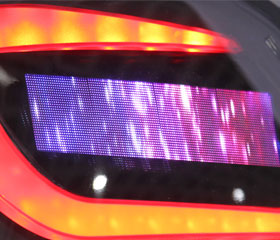
In the display industry, the LCD sector is seeing stagnant growth, with OLED gradually carving out a big chunk of the market share, particularly in the small- to medium-size segment. While OLED aspires to become the next mainstream of the display market, LED makers are striving to stake their own claims, banking on mini and micro LED technologies.
LED displays are now widely used in digital billboards for exhibition, advertising, traffic alert, sporting events and other outdoor applications. LEDs with a pixel pitch smaller than 2.5mm (P2.5) are called fine pixel pitch LEDs. This segment is currently showing the fastest growth in the LED industry.
Fine pixel pitch LED products will transition into mini LED products in the next stage of development. Leading manufacturers of mini LED displays currently include Sony, Samsung Electronics and Lumens. China-based and US-based LED display makers including Leyard, Unilumin, Aoto and Daktronics are also looking to foray into this segment.
But mini LED displays are at a disadvantage against LCD public displays mainly due to their high costs. For example, Samsung charges US$400,000 for its 146-inch mini LED display including control equipment and installation costs. But the advantage of mini LED displays over LCD public displays is their superior picture quality. The fact that mini LED displays are made up of modules makes their size virtually unlimited.
Micro LED displays for small-size applications remain in an early stage of development and there has yet been widespread commercialization, while high unit costs hinder the commercialization of large-size micro LED displays for the time being.
With its outstanding characteristics, micro LED has superior color performance, brightness (suitable for outdoor viewing), pixel per inch (PPI), energy efficiency, physical structure (lightweight and slimness) and viewing angle as opposed to LCD and AMOLED.
LCD, compared to micro LED and OLED, has the advantage of high yield and low cost but lags behind in value-added features such as color space, lightweight and slimness, bendability, and transparency.
Small-size display panels are now mainly used in smartphones and smartwatches, which largely adopt AMOLED displays. As the two leading consumer electronics makers Samsung and Apple have successfully built high-end images for their smartphones and smartwatches generally using AMOLED panels, competitors are following suit, making AMOLED displays a popular trend.
Smartphones are the No. 1 application for small-size display panels. It is still challenging for micro LED displays to penetrate into this application market mainly because for micro LED displays to deliver the refined quality smartphones ask for, mass transfer of micro LEDs onto the backplane remains a major challenge.
This Special Report analyzes the challenges and opportunities facing mini and micro LED developments. It offers insights into the market segments where the emerging LED technologies are likely to succeed.

